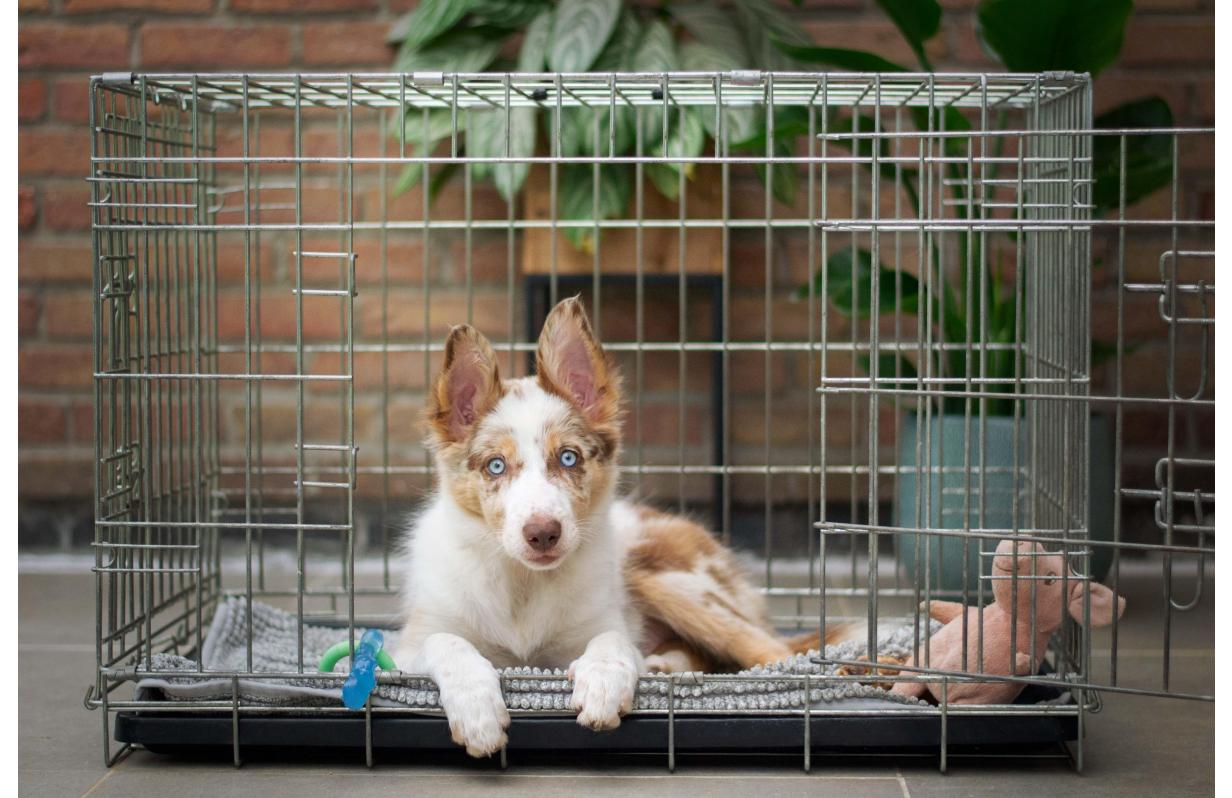
Crate Training: Is It Right For You and Your Dog?
Is Crate Training Right For You and Your Dog?
Some pet parents worry that “locking their dog up” in their crate could be cruel on them, but if introduced and used correctly it can become one of their favourite places to be! What may look like a basic enclosure to you can actually feel like home to them, with a few additions of course.
Here’s how crates can benefit both you and your pooch:
Benefits for Crate Training
- Giving your dog a space of their own: Dogs tend to prefer protected places when settling down, so a crate is a great way to tap into their natural instinct to rest in a safe space. By picking an appropriately sized crate and taking the time to gradually introduce your dog will help them consider making this their comfy refuge.
- Potty training: A big plus in crate training is it helps aid the housetraining process, as most pups won’t soil where they sleep. When they start to get the hang of the process it can be a key step in their potty-training process.
- Providing a safe recovery zone: Should a medical procedure or injury happen during your dog’s life; you may need to restrict their movement. Making sure they are comfortable and happy in their crate can make this process easier for you and less stressful on them.
- Traveling with your dog: Traveling with your dog both internationally and in the boot of the car can become easier and less stressful on them if they are familiar to confined space of a crate.
Supplies You Need
- Correctly sized crate: Your dog’s crate should be large enough so that your dog can stand up, turn around and lie down comfortably, but not much more than that. Don’t be tempted to purchase an oversized crate, as the more room you give them the harder potty training will be. Shop crates here.
- Bedding: Keep your dog comfortable with appropriate yet simple crate mat.
- Blanket: To create more of a ‘cave’ like experience for your pup, drape over the top of their crate with a light blanket or crate cover. Be sure not to use a thick/heavy blanket to ensure they don’t over heat when they are inside.
- Treats: Tasty treats are essential to create a positive crate introduction experience, and any other positive training you want to do with your dog! Find treats here.
- Toys: It’s important to find toys that can offer your dog some mental stimulation when left alone inside their crate. It helps keep them entertained and happy until they drift off to sleep. Try treat-stuffable toys like KONG!
Where Should I Keep My Dog’s Crate?
An ideal place to consider would be a location that is quiet enough for your dog to rest, but not too far away from the household where they would feel isolated. Try a corner of your living room or another area your households gathers in regularly.
Night time for pups it is particularly important to keep them close to where you sleep. Pups often need regular toilet breaks throughout the night, so it’s helpful to be close enough so you can hear when they need to go out. This is where it can be helpful to have two crates for day to night to help aid the process.
Crate Training Tips & Tricks
- Do not keep your dog in the crate for too long and always keep an eye on the time. Particularly for puppies who struggle to hold for long at very early age. As a rough estimate, trial their age in months and translate that to hours for their “hold time”. For example: 3-month pup can hold for about 3 hours, but playtime and excitement can make them need to go more regularly too. For adult dogs, avoid crating them for more than 4 hours.
- Never use the crate for punishment. This is crucial that their crate remains their happy and safe space, if introduced otherwise will undo all of your previous positive reinforcement.
- Feed your dog’s meals inside their crate with the door open. This process helps to associate it as a positive space.
- Get to know their noises. There’s a difference between “neediness” and “I need to pee” sounds. If your pup is still whining after a toilet trip, leave them be to settle in for a few minutes.
- Always give your dog a toilet break before putting them inside their crate, and don’t forget to take them for toilet straight after letting them out the crate for a period of time.
- 193
